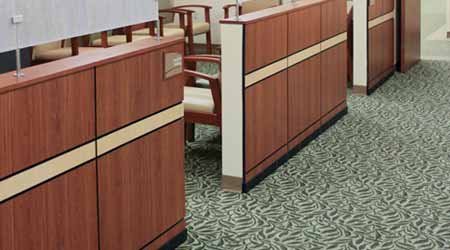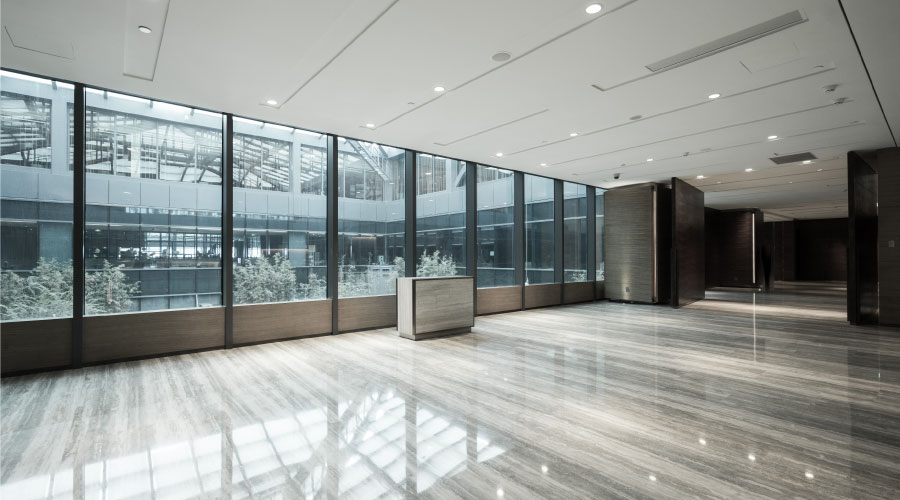 Mendota Community Hospital considered acoustical quality and patient satisfaction when it selected the floorcovering for its surgical waiting room: bleach-resistant, soil-resistant, and antimicrobial-treated carpet.Oculus Inc., Ron Reim
Mendota Community Hospital considered acoustical quality and patient satisfaction when it selected the floorcovering for its surgical waiting room: bleach-resistant, soil-resistant, and antimicrobial-treated carpet.Oculus Inc., Ron ReimHow Floorcoverings Decisions Affect Environment of Care
The right floorcovering selections can help reduce injuries among healthcare staff, increasing patient care standards and staff satisfaction.
The environment of care, whether in an acute or ambulatory setting, influences choices in floorcoverings. When designing for an ambulatory care environment such as a clinic or medical office building where examinations, procedures, and rehabilitation take place, the selection of floorcoverings should be driven by appropriateness of use along with other contributing factors that affect patient and staff experience. Ambulatory care facilities, including ambulatory surgery centers, perform less complicated procedures not requiring an overnight stay. These facilities entail fewer intrusions from medical functions and can therefore focus on including more design elements affecting the patient’s emotional and physical requirements. From the moment patients walk through a clinic’s doors to their departure, floorcoverings need to be attractive, comfortable, and durable. Likewise, facility managers should include mandatory health, safety, and welfare factors such as infection control and fall prevention in the selection of floorcoverings, just as would be done in an acute care setting.
The Facility Guidelines Institute plays a significant role in providing planning and design recommendations for acute, ambulatory, and special functional areas of healthcare facilities. The Guidelines suggest certain flooring performance characteristics for individual areas, but it’s up to the designer and hospital team to hammer out the details. Having an experienced architect/interior designer who is familiar with requirements for healthcare environments can ensure that all finishes are appropriately selected, specified, and implemented.
Hospital staff is the user group that experiences the effectiveness and suitability of a facility’s design elements on a regular and first-hand basis, and staff considerations are essential in the selection of floorcoverings. When selecting floorcoverings with staff safety and satisfaction in mind, it’s important to note that more and more hospitals are working to accommodate the growing bariatric population by using flooring with high coefficient of friction ratings, which contributes to surer footing for both staff and patients. The number of injuries to staff while assisting this population is staggering, and recruiting new staff can be hampered by a facility’s track record of workers’ compensation claims.
Not to be overlooked is the aesthetics of flooring. The color, design and attractiveness of flooring is a daily presence for hospital staff, so questions of visual fatigue are important to evaluate in flooring selection.
Related Topics:















